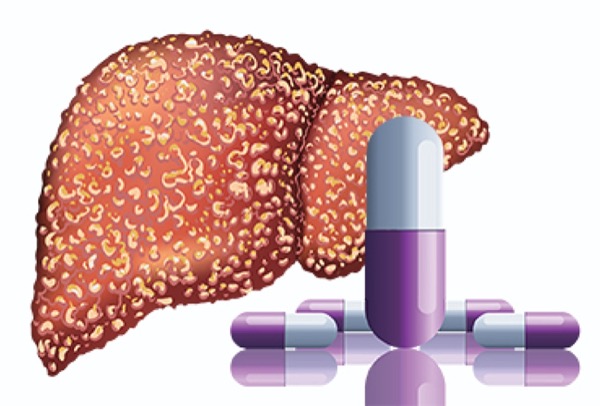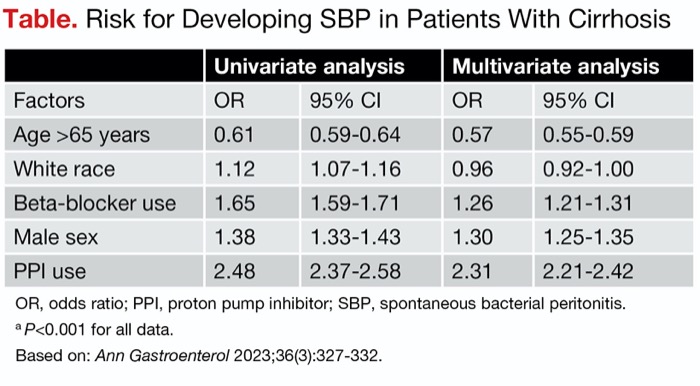Patients with cirrhosis taking proton pump inhibitors are at increased risk for developing spontaneous bacterial peritonitis, regardless of gastrointestinal bleeding status, according to a new study.
Patients with cirrhosis often experience GI bleeding, and previous research has shown upper GI bleeding increases the risk for spontaneous bacterial peritonitis (SBP) infections (Am J Gastroenterol 2007;102[9]:2086-2102). Because infections such as SBP are a leading cause of mortality in patients with cirrhosis, more research has begun to tease out an association with risk factors for SBP. Previous studies have found a link to PPI use, but results have been “conflicting and lack generalizability,” the investigators of the current study wrote in Annals of Gastroenterology (2023;36[3]:327-332).
To examine this relationship and rule out GI bleeding as a possible confounder, the researchers retrospectively analyzed a validated multicenter cohort of patients in the United States to determine factors associated with SBP in patients with cirrhosis.
In total, the data set included 377,420 patients with cirrhosis between 1999 and 2022, 12,900 of whom had SBP. Those with SBP were more likely to be younger than 65 years of age, male, have metabolic dysfunction–associated steatohepatitis (formerly nonalcoholic steatohepatitis), chronic hepatitis C infection, GI bleeding, gastroesophageal reflux disease, hepatic encephalopathy, and use PPIs or beta-blockers (P<0.001 for each).
Among those taking PPIs, the annual incidence of SBP was 2,500 per 100,000. Patients with cirrhosis on PPIs were more likely to be at risk for SBP than those not taking PPIs, in both univariate and multivariate analyses (Table). The risk was independent of age, sex, race/ethnicity, use of beta-blockers and GI bleeding in the multivariate analysis.
| Table. Risk for Developing SBP in Patients With Cirrhosis | ||||
| Univariate analysis | Multivariate analysis | |||
|---|---|---|---|---|
| Factors | OR | 95% CI | OR | 95% CI |
| Age >65 years | 0.61 | 0.59-0.64 | 0.57 | 0.55-0.59 |
| White race | 1.12 | 1.07-1.16 | 0.96 | 0.92-1.00 |
| Beta-blocker use | 1.65 | 1.59-1.71 | 1.26 | 1.21-1.31 |
| Male sex | 1.38 | 1.33-1.43 | 1.30 | 1.25-1.35 |
| PPI use | 2.48 | 2.37-2.58 | 2.31 | 2.21-2.42 |
| OR, odds ratio; PPI, proton pump inhibitor; SBP, spontaneous bacterial peritonitis. a P<0.001 for all data. Based on: Ann Gastroenterol 2023;36(3):327-332. | ||||
Due to the size and representativeness of the cohort, the researchers believe “the results of this study are generalizable and can be incorporated into future management guidelines for SBP.” Their findings, they wrote, combined with the over-the-counter availability of PPIs and their common misuse by patients with cirrhosis, stress the need for “close monitoring for [and] judicious” use of PPIs in this patient population.
—Natasha Albaneze, MPH






